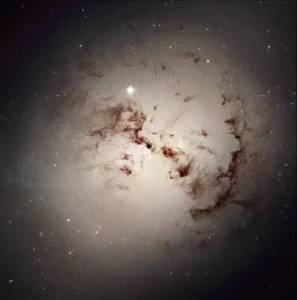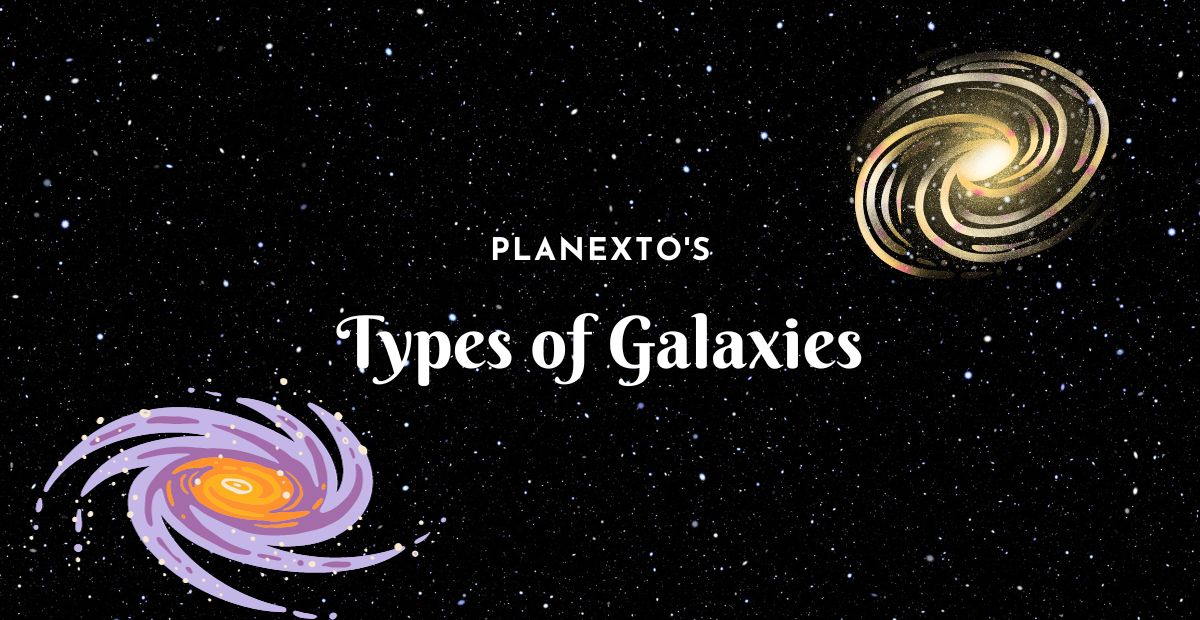Introduction
In the vast expanse of our universe, galaxies stand as captivating celestial entities, each holding unique characteristics and mysteries. In this exploration of cosmic wonders, we delve into the various types of galaxies that adorn the cosmic canvas, unraveling their distinct features and unveiling the secrets they hold.
What is Galaxy?
Galaxy basically means this huge gang of stars, leftover star bits, gassy stuff, dust, and the mysterious dark matter, all stuck together because of gravity. Galaxies can be big or small, look different, and have their own special mix of things. They’re like the basic building blocks of the whole universe, packing in billions to trillions of stars.
The Cosmic Mosaic: Types of Galaxies
Spiral Galaxies: Dance of Cosmic Arms
Spiral galaxies, characterized by their striking spiral arms, are a captivating spectacle in the night sky. Picture our own Milky Way, a prime example of this cosmic dance. These galaxies boast a central bulge surrounded by spiraling arms adorned with stellar brilliance.

Elliptical Galaxies: Graceful Spheres in Space
Elliptical galaxies, unlike their spiral counterparts, take on a more spherical form. Their structure ranges from elongated ellipsoids to perfectly round spheres. Within these cosmic orbs, stars move in a seemingly random fashion, creating a celestial ballet of cosmic proportions.

Irregular Galaxies: Nature’s Artistic Flair
Irregular galaxies defy conventional shapes, embracing asymmetry and unpredictability. These galactic outliers are a testament to the dynamic nature of our universe, exhibiting a diverse array of structures that challenge our perception of cosmic order.

Lenticular Galaxies: Bridging the Spiral-Elliptical Divide
Lenticular galaxies blend characteristics of both spiral and elliptical galaxies. With a central bulge akin to ellipticals and a disc reminiscent of spirals, these galactic hybrids occupy a unique niche in the cosmic hierarchy.

Types of Galaxies in Tabular Format
| Galaxy Type | Features | Notable Examples |
|---|---|---|
| Spiral Galaxy | Twisting arms of stars and gas | Milky Way, Andromeda |
| Elliptical Galaxy | Smooth, oval-shaped collections | M87, Centaurus A |
| Irregular Galaxy | Lack a distinct, regular structure | Large Magellanic Cloud, IC 1613 |
| Lenticular Galaxy | A disk-like structure without prominent spiral arms or a central bulge | Sombrero Galaxy (M104), NGC 3115 |
Navigating the Galactic Landscape: Key Characteristics
Size Matters: Galactic Dimensions Unveiled
The sheer size of galaxies is awe-inspiring. Ranging from a few thousand to hundreds of thousands of light-years in diameter, these celestial giants house billions of stars, each contributing to the galactic symphony.
Stellar Populations: Stars in Cosmic Communities
Galaxies are not just random assortments of stars; they host diverse stellar populations. From young, hot stars illuminating spiral arms to the aging stars residing in elliptical galaxies, each type boasts its own stellar community, creating a mesmerizing celestial tapestry.
Galactic Clusters: Cosmic Communities in Close Proximity
Galactic clusters bring galaxies together in gravitational embraces, forming celestial communities. The dynamics of these clusters, whether loose or tightly knit, influence the fate and evolution of their member galaxies, adding another layer to the cosmic narrative.
Unraveling Galactic Mysteries: A Glimpse into Ongoing Research
Dark Matter’s Enigma: Galaxies’ Hidden Partner
One of the most profound mysteries surrounding galaxies is the role of dark matter. Though invisible, its gravitational influence shapes galactic structures, leaving astronomers intrigued and engaged in ongoing research to unveil its elusive nature.
Galactic Collisions: Celestial Ballets in Slow Motion
Galaxies, despite their seemingly tranquil appearance, engage in cosmic collisions over cosmic timescales. These events, where galaxies interact and merge, reshape their forms and trigger bursts of star formation, painting the cosmic canvas with celestial fireworks.
Conclusion: A Celestial Tapestry Woven with Diversity
As we traverse the cosmic landscape, exploring the myriad types of galaxies, it becomes clear that our universe is a realm of unparalleled diversity. From the graceful spirals to the irregular cosmic artworks, each galaxy tells a unique story, contributing to the grand narrative of our cosmic journey. Embracing this diversity, we continue our quest to understand the cosmos, ever fascinated by the celestial wonders that grace the night sky.








